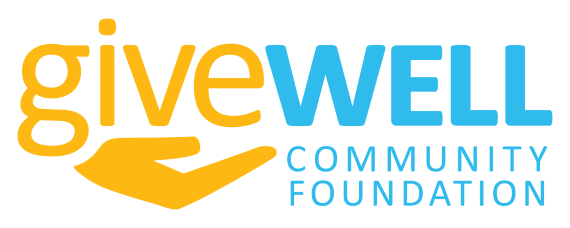Important topics when meeting with clients, inherited IRAs, and more.
Inherited IRAs: Big headache, or big opportunity?
Don’t be surprised if your clients are walking into your office in a state of bewilderment over something they’ve read recently about the IRS’s distribution rules for inherited IRAs.
What’s the back story?
Until the law changed a few years ago, a client who was named as the beneficiary of a parent’s IRA, for example, could count on a relatively straightforward and tax-savvy method of withdrawals called the “stretch IRA.” With the passage of the SECURE Act, that changed for many clients who inherited an IRA after December 31, 2019. Instead of taking distributions over their lifetimes, affected clients would need to withdraw the entire inherited IRA account within a 10-year period as calculated under the law.
What’s the problem now?
Too bad about the loss of the stretch IRA, but we’ve all had time to adjust to the new IRS rules, right? Wrong. Unfortunately, the IRS rules are, at the moment, clear as mud. Concern escalated when the IRS issued proposed (but not yet final) regulations earlier this year. Advisors and clients are facing an acute discrepancy between what had been understood by practitioners immediately after the SECURE Act was passed, on one hand, and what the IRS has included in the proposed regulations, on the other hand.
Specifically, some non-spouse beneficiaries of an inherited IRA may not be able to wait until the 10-year post-inheritance mark to fully withdraw the funds in a lump sum, but instead, according to the proposed regulations, must begin taking annual distributions immediately following the inheritance and throughout the statutory 10-year period during which all funds must be withdrawn. This is a hard pill to swallow for clients who were counting on years of additional tax-free growth and who had hoped to defer an income tax hit until a lower-income year.
The situation is complicated but worth understanding (we like this very clear article) because of the potential headaches the proposed regulation could cause for your clients who are caught in the gray area.
A charitable giving opportunity?
The current state of confusion could present a golden opportunity to serve your philanthropic clients.
First, anytime you are talking about IRAs, inherited or not, you’ll want to make sure your client knows about Qualified Charitable Distributions (QCDs). As tax enthusiasts, you may feel you talk about QCDs all the time. Hearing the message multiple times, though, is crucial in order for clients–who are likely not tax experts–to truly appreciate the benefits of the QCD.
As a reminder, through QCDs, a client who is 70½ or older can use a traditional IRA to distribute up to $100,000 ($200,000 for a couple) per year, which happily counts toward satisfying Required Minimum Distributions, to a qualified charity, including certain types of funds at the GiveWell Community Foundation. The distribution is not reported by the client as taxable income because it goes straight to charity.
Second, for your clients owning inherited IRAs who are caught in the confusion of SECURE Act proposed regulations, a QCD could come in very handy. The IRS does permit taxpayers to make QCDs from inherited IRAs, not just their own IRAs. This option could be a welcome relief to clients who are facing the more stringent proposed IRS regulations governing the payout requirements for inherited IRAs.

Highly-appreciated stock: If your client missed the ideal window, it’s still not too late to support charity
During a routine check-in meeting, your client casually mentions that the client’s employer, a local company, was just acquired. The client and dozens of fellow employee shareholders are now flush with cash. “I’d like to use some of the money to give to charity,” the client tells you.
You try not to flinch as you mentally calculate the capital gains taxes your client could have avoided if the client had given some of those shares to a fund at GiveWell Community Foundation years ago when the company was clearly growing fast, making it a natural target for acquisition or IPO, but well before an exit was in the works.
All is not lost. You can still help the client establish a donor-advised, field-of-interest, unrestricted, or other type of fund at the Community Foundation to fulfill the client’s charitable intentions. The client’s gifts to the fund qualify for a charitable tax deduction in the current tax year, helping to offset the income from the sale of the shares.
Still, this situation is all too common and a good reason to regularly remind clients about their options for making gifts to charity and the tax benefits of each.
Giving cash to a public charity, which is what your client in this situation will be doing, is always a viable option. The general rule is that your client can deduct cash gifts to up to 60% of their adjusted gross income (AGI) in any given year. While this may not completely offset large gains from the sale of the stock, it will help to reduce the client’s taxable income.
Giving appreciated stock, which is what you wish your client had done, is a very tax-effective method of supporting public charities. Clients who donate stock outright avoid all capital gains tax that would be levied on a sale of the stock if it were sold prior to making the donation. Even with the 30 percent of AGI limitation imposed on gifts of highly-appreciated, long-term capital gains property to a public charity, your client likely will still come out ahead because the client’s AGI is presumably a lot lower than it will be in the year of a future stock sale.

The “i’s” have it: Two key topics for client meetings
Inflation, interest rates, income tax, and the IRS are ever-present topics during discussions with your clients. Right now, there’s a lot to talk about it, especially related to charitable giving.
Let’s look at two examples of hot topics that may take a front seat in your client conversations this fall as you are helping your clients consider their options for structuring charitable giving and philanthropic legacies in the current economic environment.
Our first hop topic is the notion that rising interest rates can increase the attractiveness of certain charitable remainder gift vehicles.
Clearly, wealth planning priorities are impacted by interest rates. Charitable components of estate and financial plans are no exception. When interest rates are high, your clients may want to look closely at annuity vehicles that leave a remainder gift to charity, such as a charitable remainder annuity trust or a charitable gift annuity.
Creating a charitable remainder annuity trust in a high interest rate environment, versus a low interest rate environment, drives down the present value of your client’s income stream, which means that the value of the remainder passing to charity is relatively high and therefore so is the client’s upfront tax deduction for the charitable portion of the gift.
Charitable gift annuities also are becoming more attractive to philanthropic clients, for different reasons. Thanks to the recent increase in rate of return assumptions for charitable gift annuities, this planned giving vehicle is now more attractive to donors who like the idea of a higher payout rate for their lifetime annuity.
Our second hot topic relates to the IRS. Projected increases in the IRS’s ranks may be raising more advisors’ and clients’ eyebrows than actual tax hikes. The much anticipated Inflation Reduction Act is now law, and while the Act did include changes to a few income tax provisions, many tax professionals are viewing the Act’s $80 billion in funding increases for the IRS to be the bigger headliner.
Some commentators worry that the IRS still may not be able to build its staff and update technology as quickly as the legislation anticipated. Nonetheless, financial advisors, attorneys, and accountants are taking note. In all likelihood, shoring up the IRS’s operations means that the chances of client audits will increase. Your clients may even be reading up on this in the mainstream media, which frequently cites unusually large charitable deductions as a potential trigger for an IRS audit.
Now is the time to make sure your clients understand the rules for charitable deductions and commit to keeping track of their donations in detail. Establishing a fund at the community foundation is an easy way for clients to organize and track their annual giving.
Some clients, for example, make a single, tax-deductible transfer of highly-appreciated stock each year to their fund at GiveWell Community Foundation. The proceeds from the sale of that stock are then used for distributions from the fund to the client’s favorite charities. In this situation, no matter how many different charities benefit from the fund, the client still has just one receipt to keep track of charitable donations for income tax deduction purposes and the Community Foundation takes care of the rest based on donor intent.
Please reach out to learn more about ways GiveWell Community Foundation can work with you and your clients to navigate the ever-changing economic factors that influence their charitable giving plans.
The team at the community foundation is a resource and sounding board as you serve your philanthropic clients. We understand the charitable side of the equation and are happy to serve as a secondary source as you manage the primary relationship with your clients. This newsletter is provided for informational purposes only. It is not intended as legal, accounting, or financial planning advice.
Ready to get started?
You know your clients. We know philanthropy. Together we can ensure your clients make the best decisions for making a difference in the community.

Lori Martini
Vice President/CPO
863-683-3131
lmartini@givecf.org

